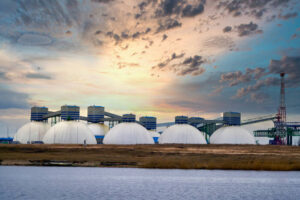Did Weather Forecasts Fuel the Natural Gas Price Reversal?
As a trusted source for investors looking to navigate the complexities of the stock market, Extreme Investor Network brings you insights beyond the headlines. This week, natural gas prices experienced a notable rollercoaster, much of it influenced by shifting weather forecasts.
Early in the week, the market reacted enthusiastically to predictions of an impending Arctic blast. Forecasts of frigid temperatures plummeting to as low as -20°F across crucial U.S. regions, including the Midwest and Texas, sparked a surge in natural gas prices. Traders anticipated a spike in heating demand, driving prices to multi-month highs. However, as midweek approached, updated weather models began to paint a different picture. Both U.S. and European forecasts hinted at a warming trend, signaling fewer heating degree days than initially expected.
This shift prompted many traders to lock in their gains, leading to a swift sell-off that completely reversed the earlier bullish momentum. This tug-of-war between cold forecasts and milder updates is a classic example of how rapidly changing weather conditions can influence market sentiment.
How Are LNG Exports and Domestic Storage Shaping Market Sentiment?
At Extreme Investor Network, we recognize that there are deeper layers at play beneath the headlines—especially concerning Liquefied Natural Gas (LNG) exports. With European demand for LNG remaining robust due to depleted storage levels and colder weather, U.S. exports have remained a critical bullish factor. Analysts note that European inventories are significantly lagging behind seasonal norms, suggesting the potential for further drawdowns in the supply.
Domestically, the Energy Information Administration (EIA) recently reported a dramatic 258 billion cubic feet (Bcf) storage withdrawal, nearly double the five-year average withdrawal of 128 Bcf. This stark withdrawal reflects the fierce demand for natural gas driven by cold temperatures across the country.
However, a more nuanced look reveals that U.S. storage levels remain 77 Bcf above the five-year average, acting as a buffer against extreme price spikes. This unexpected surplus, combined with newly emerging milder weather forecasts, has significantly tempered bullish sentiment. Furthermore, ongoing seasonal declines in demand for power generation and indications of softening LNG flows have begun to weigh down prices.
What Does the Weekly Reversal Mean for Traders?
For traders looking to make informed decisions, this week’s price reversal underscores the importance of staying agile in a fluid market. Here are a few key takeaways to consider:
-
Stay Updated on Weather Forecasts: With weather playing such a pivotal role, keeping a close eye on updates from reliable meteorological sources can provide a competitive edge. Weather patterns can change rapidly, and so can market sentiment.
-
Monitor LNG Exports: As global demand shifts—especially from markets like Europe—keeping tabs on U.S. LNG export trends can provide insights into potential price movements. Analysts suggest watching for indications of inventory levels abroad.
-
Understand Storage Reports: The EIA reports are critical indicators of market health. Being aware of both current storage levels and historical trends can help traders gauge market sentiment more accurately.
- Anticipate Market Reversals: As seen in this week’s trading, quick reactions can lead to missed opportunities. Understanding market psychology and the often volatile interplay between supply, demand, and external factors like weather can aid in well-timed trades.
In conclusion, the recent fluctuations in natural gas prices serve as a noteworthy reminder of how interconnected global markets and environmental factors can be. By staying ahead of the curve and being mindful of these variables, traders can better position themselves for success. For more in-depth analysis and real-time updates, continue following Extreme Investor Network, where we provide the insights and tools needed to navigate the ever-evolving landscape of investing.

